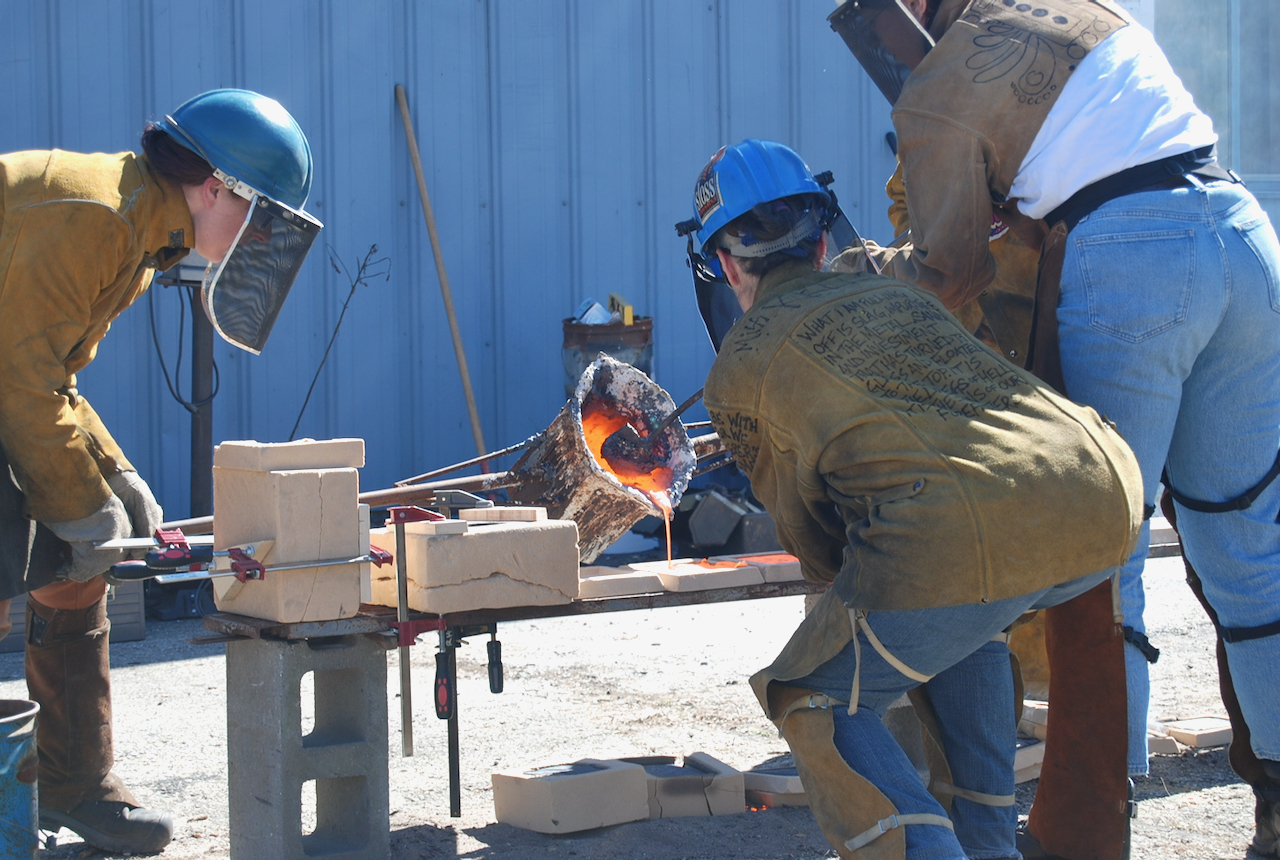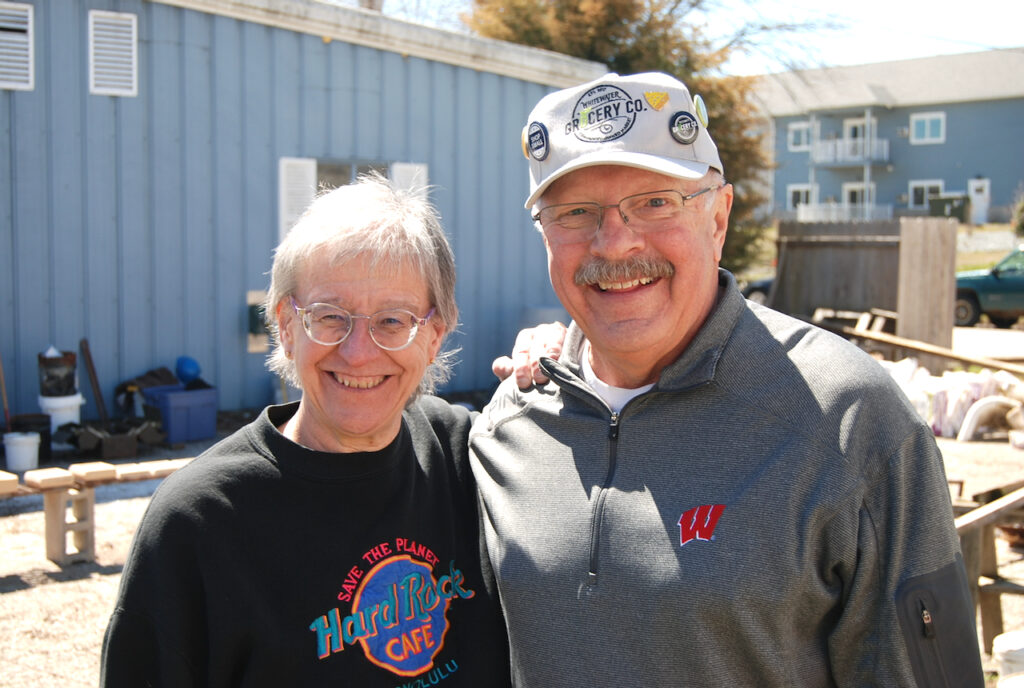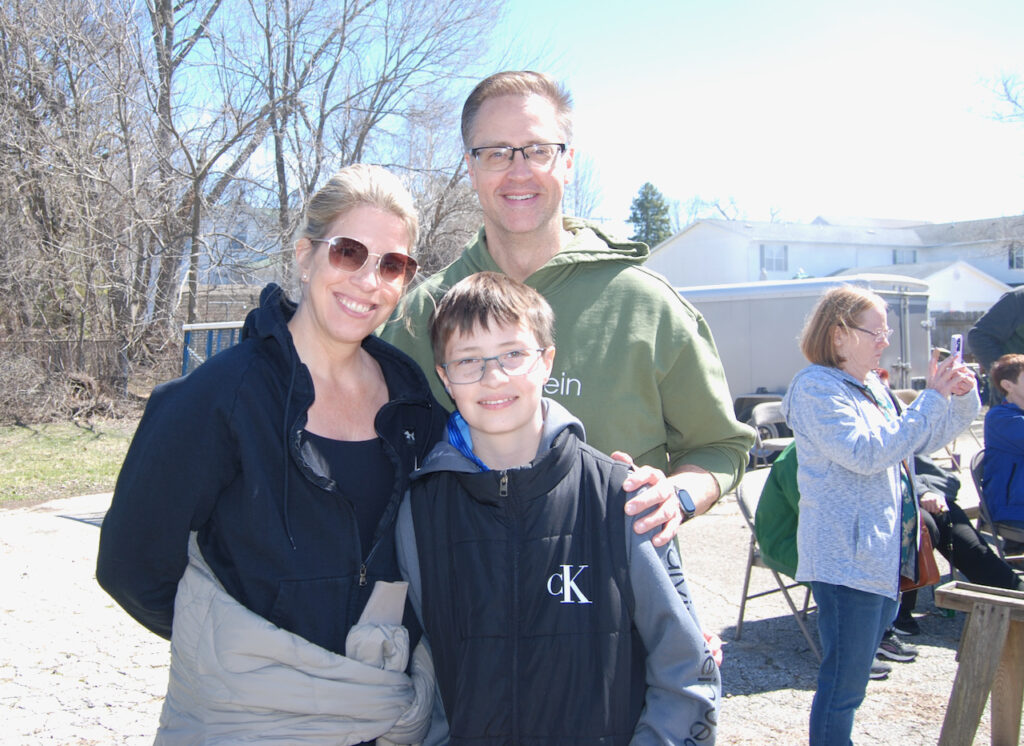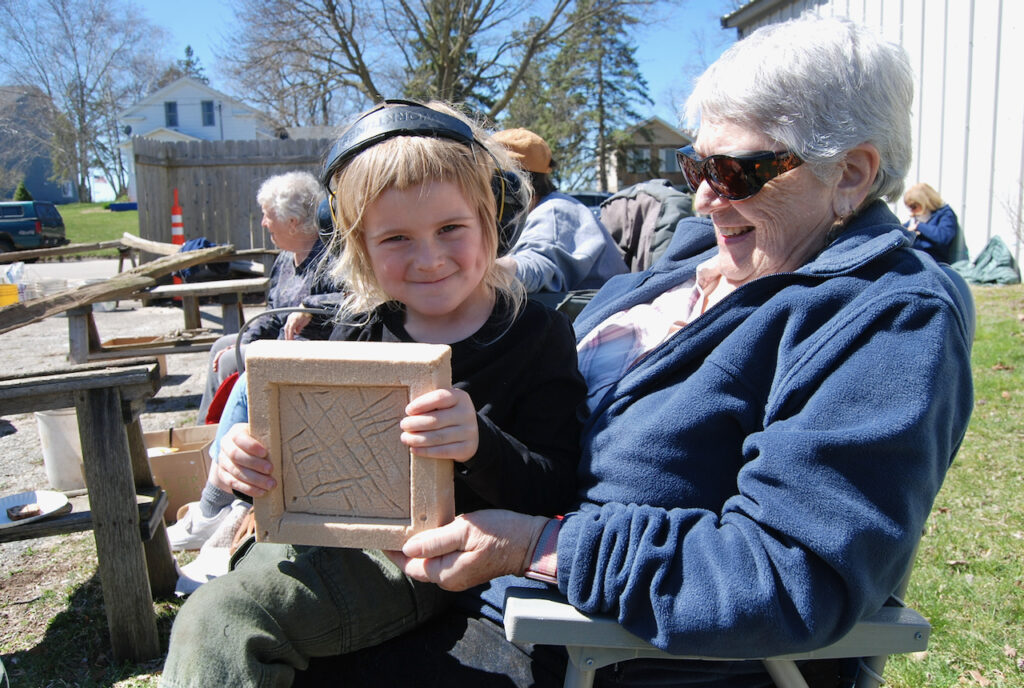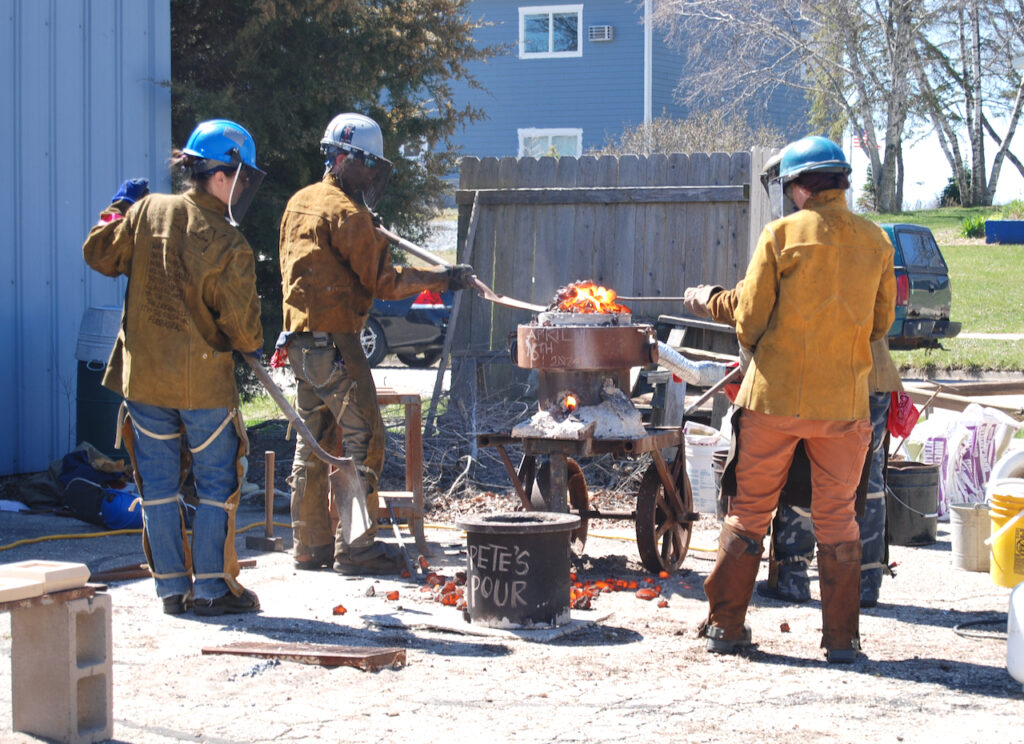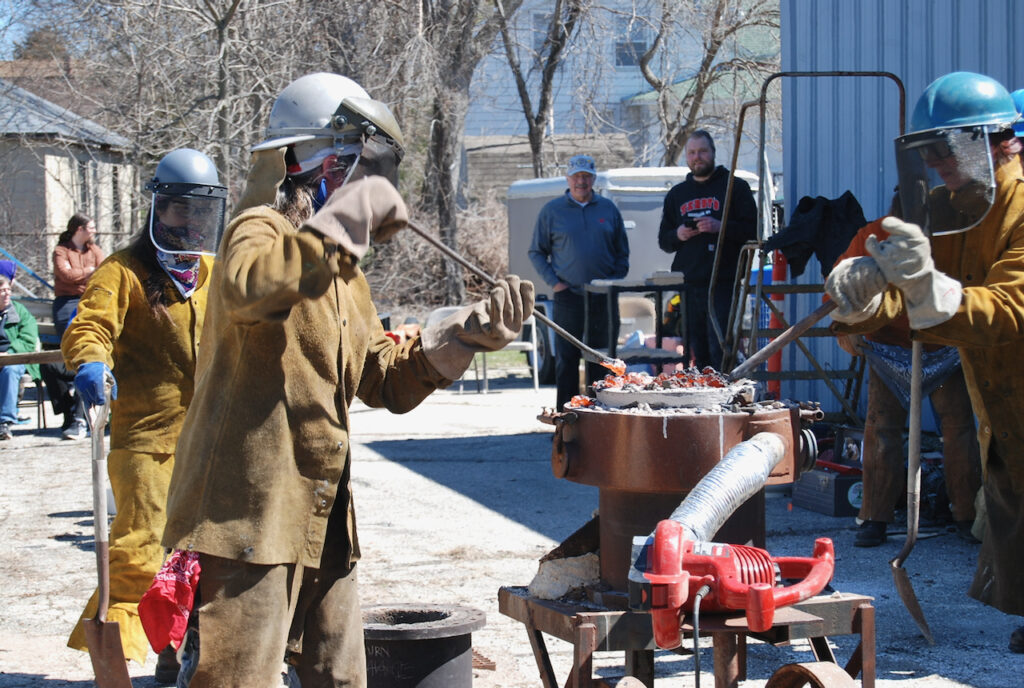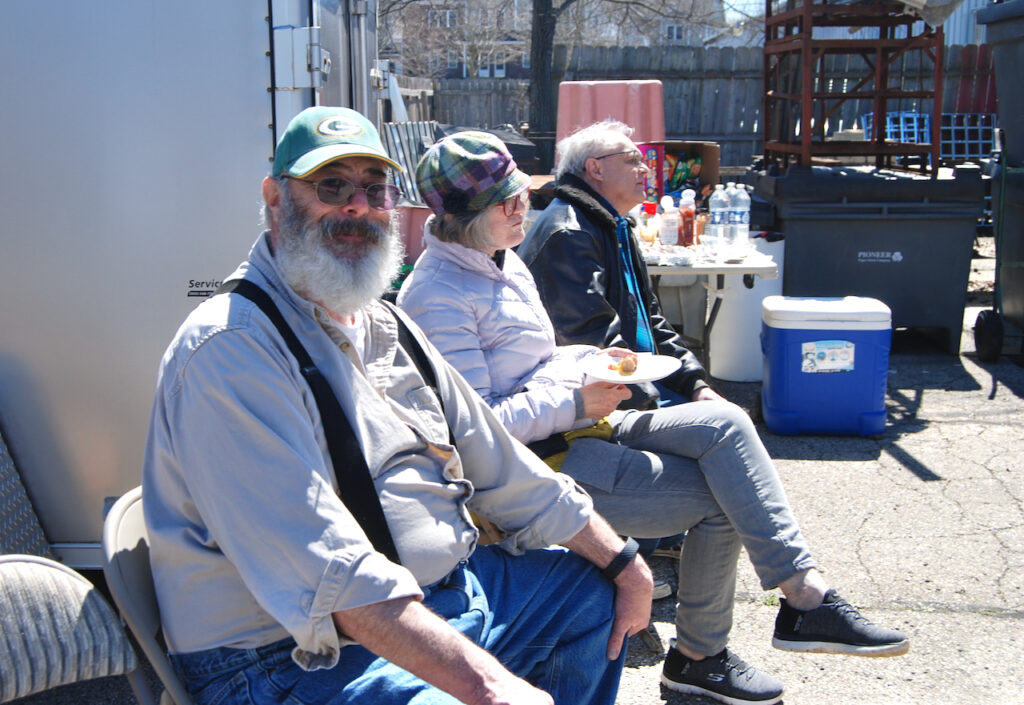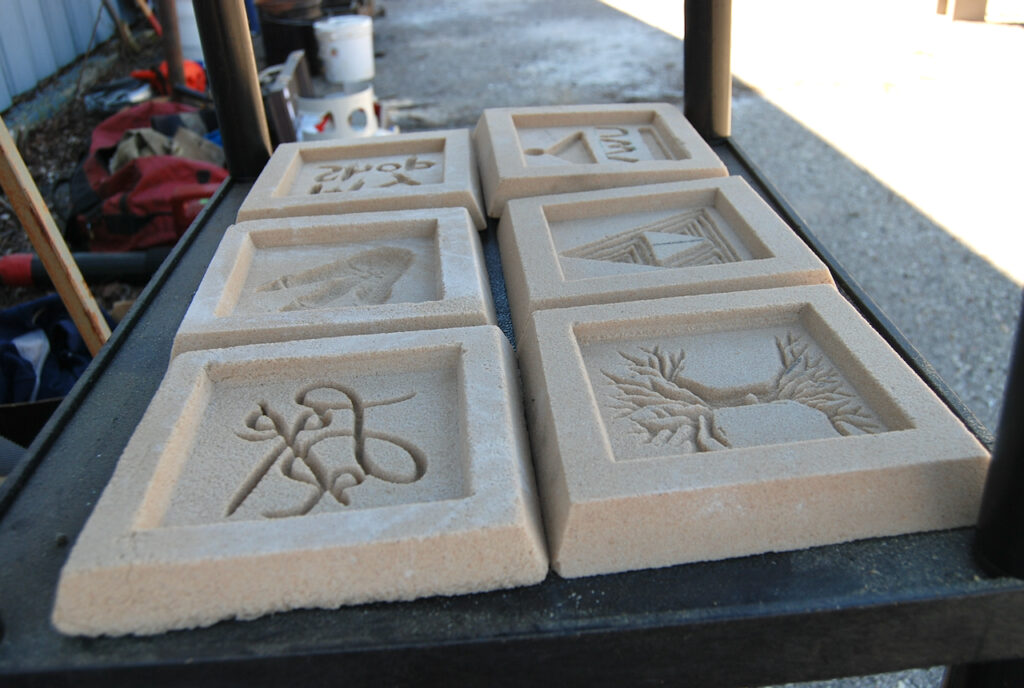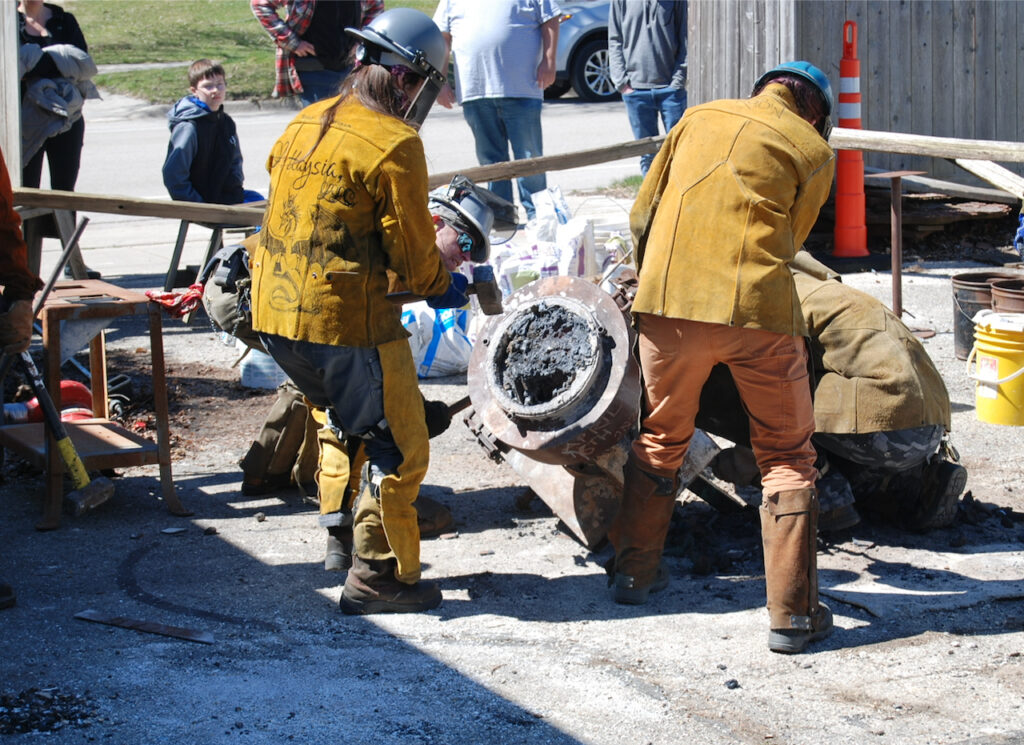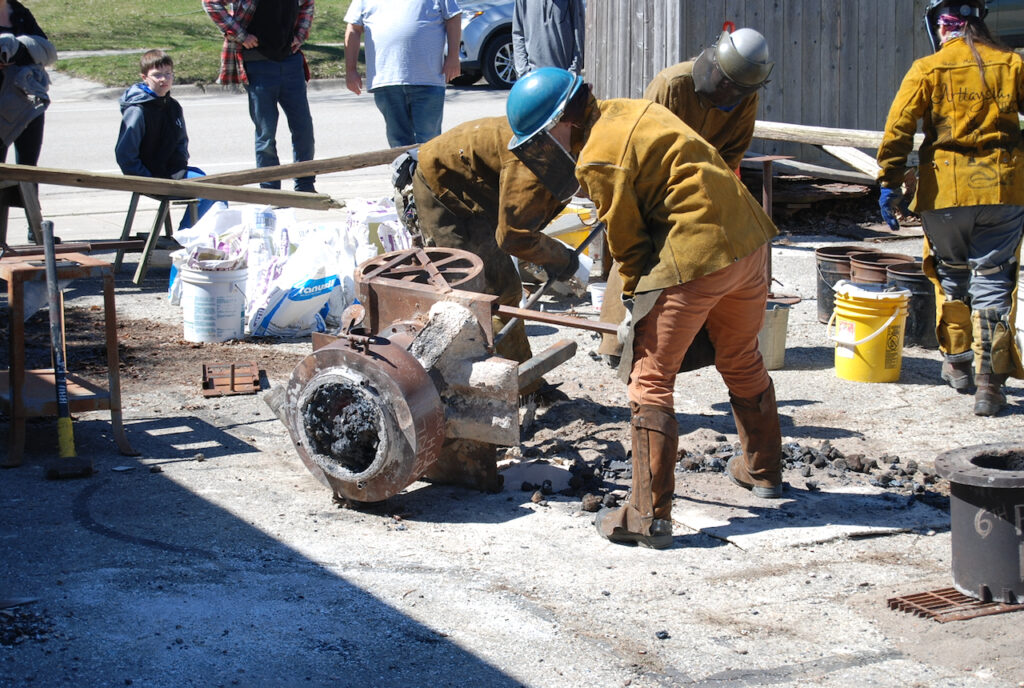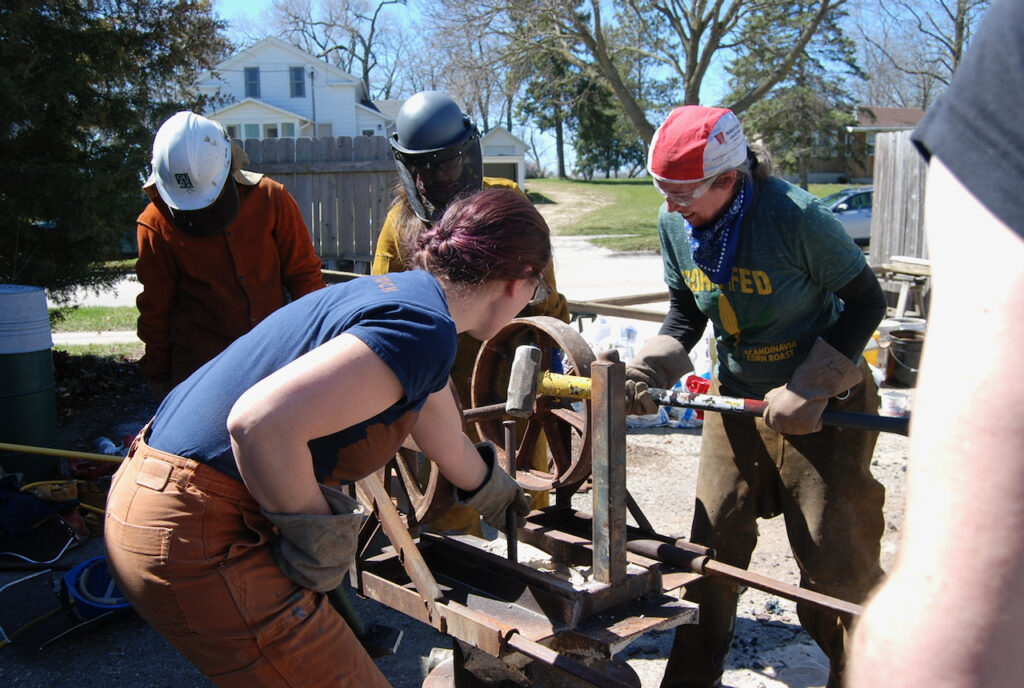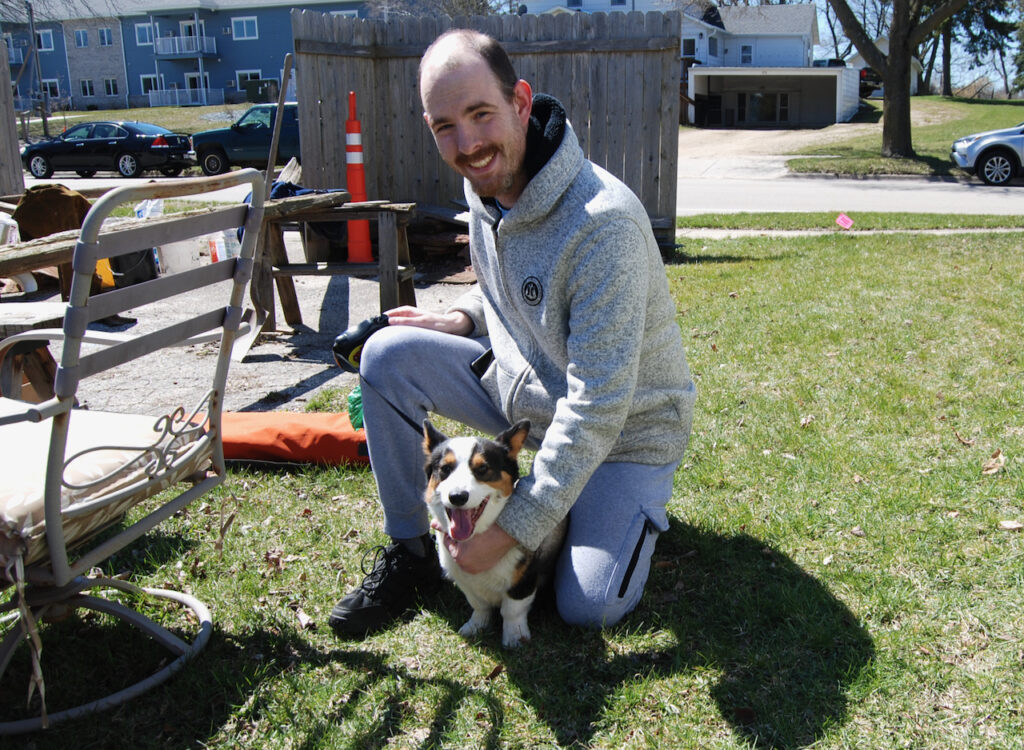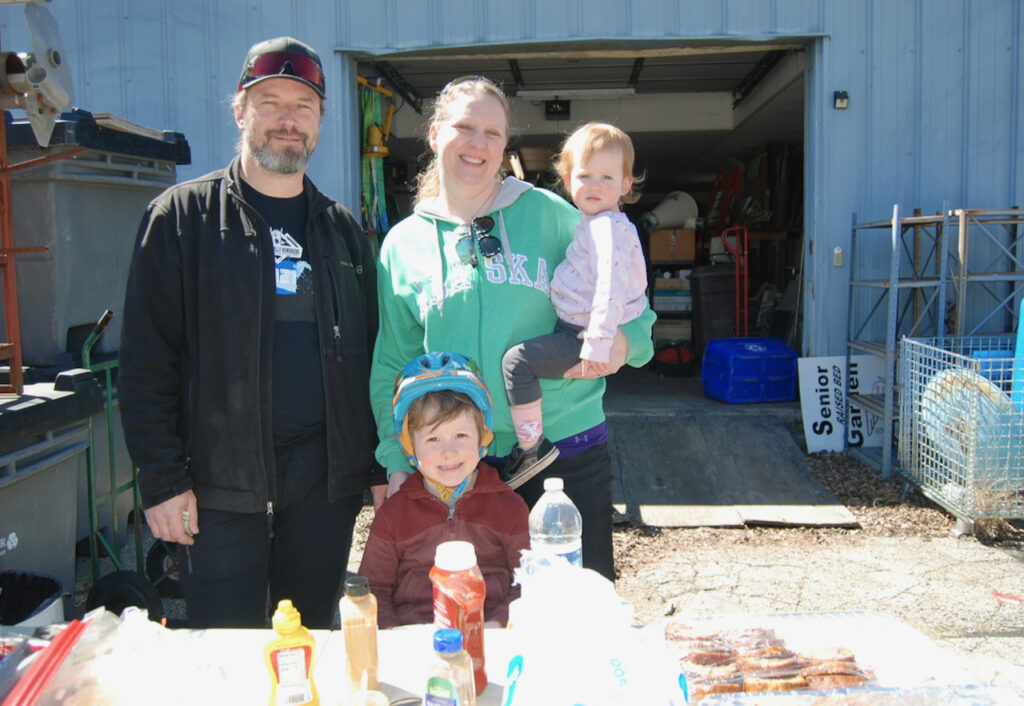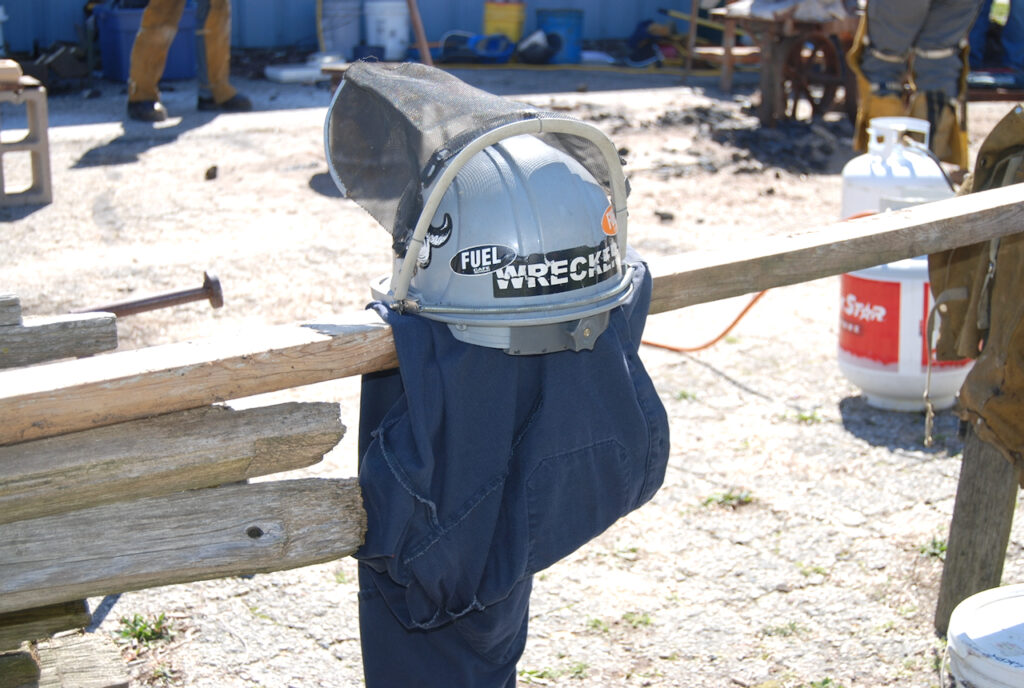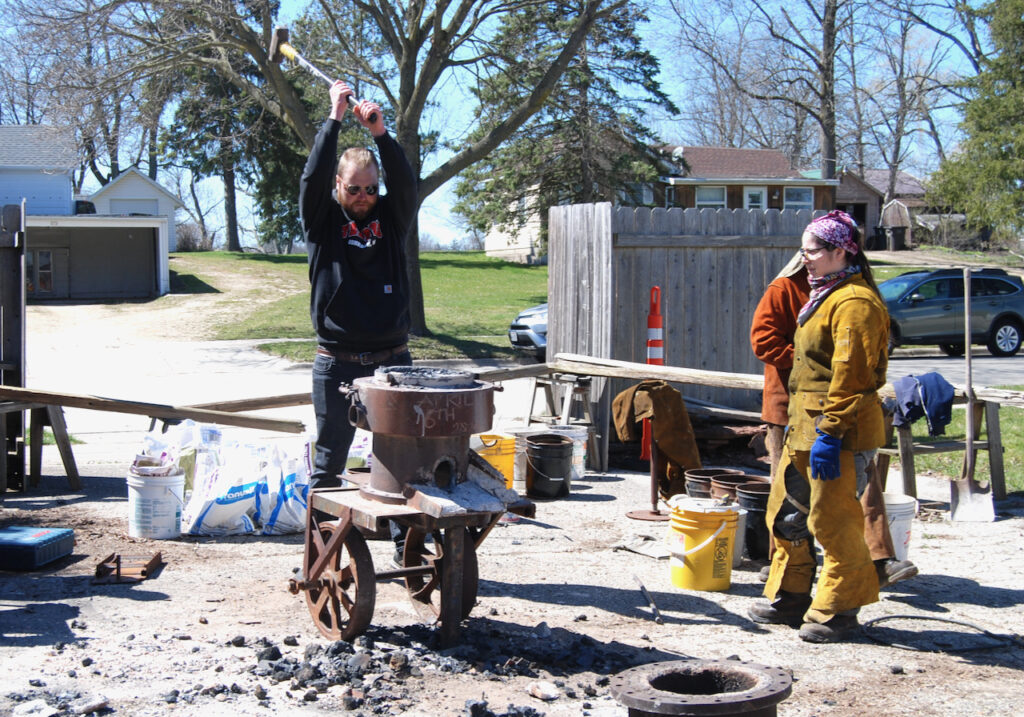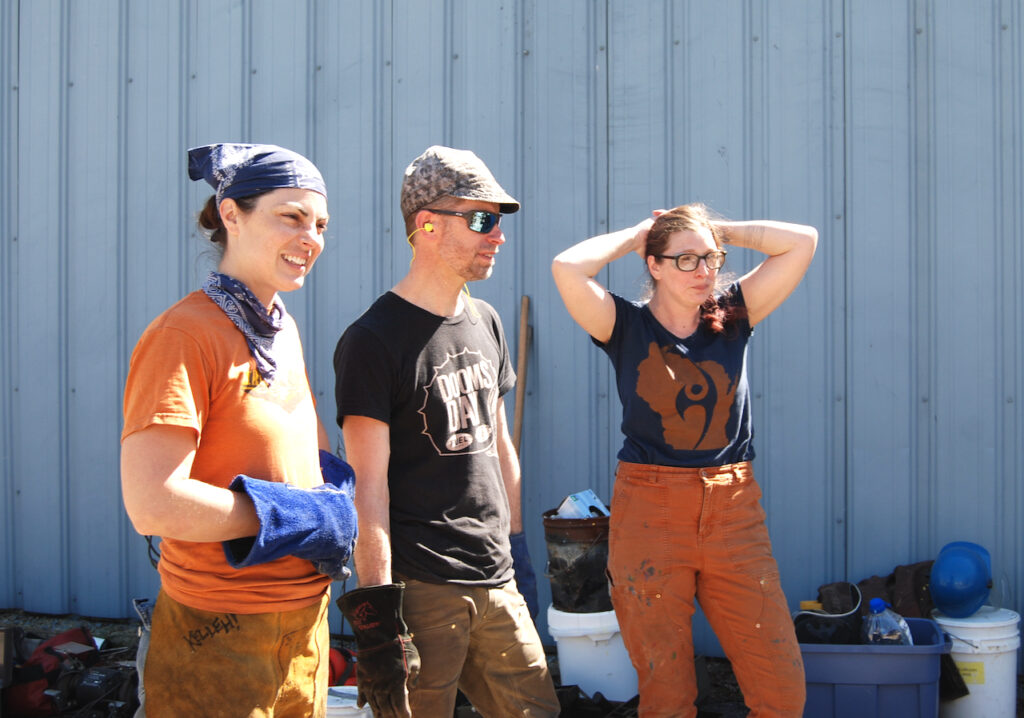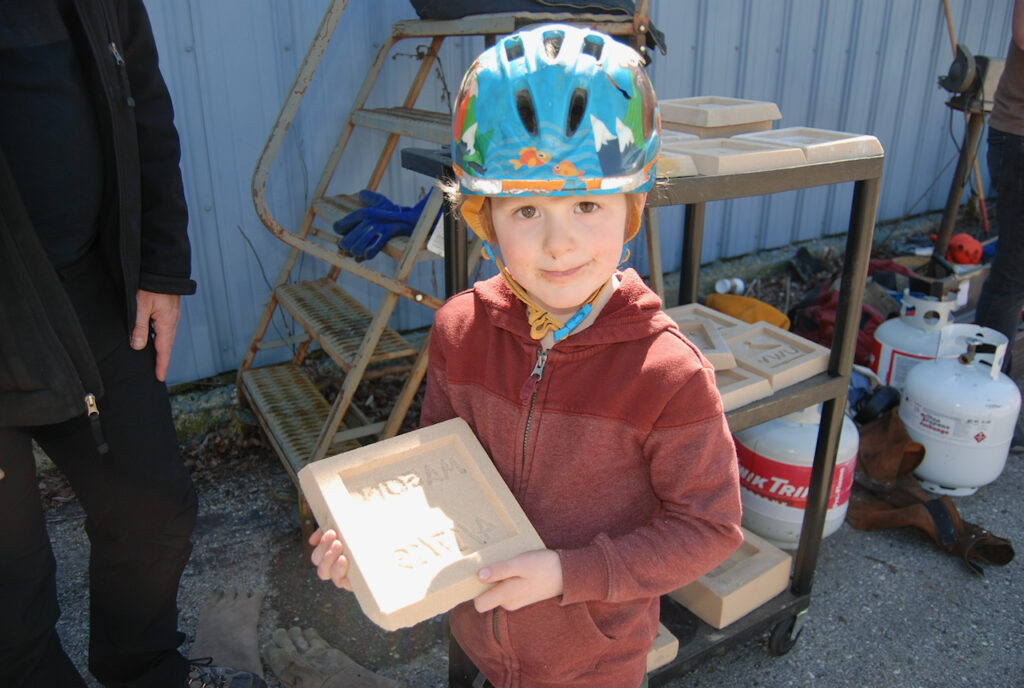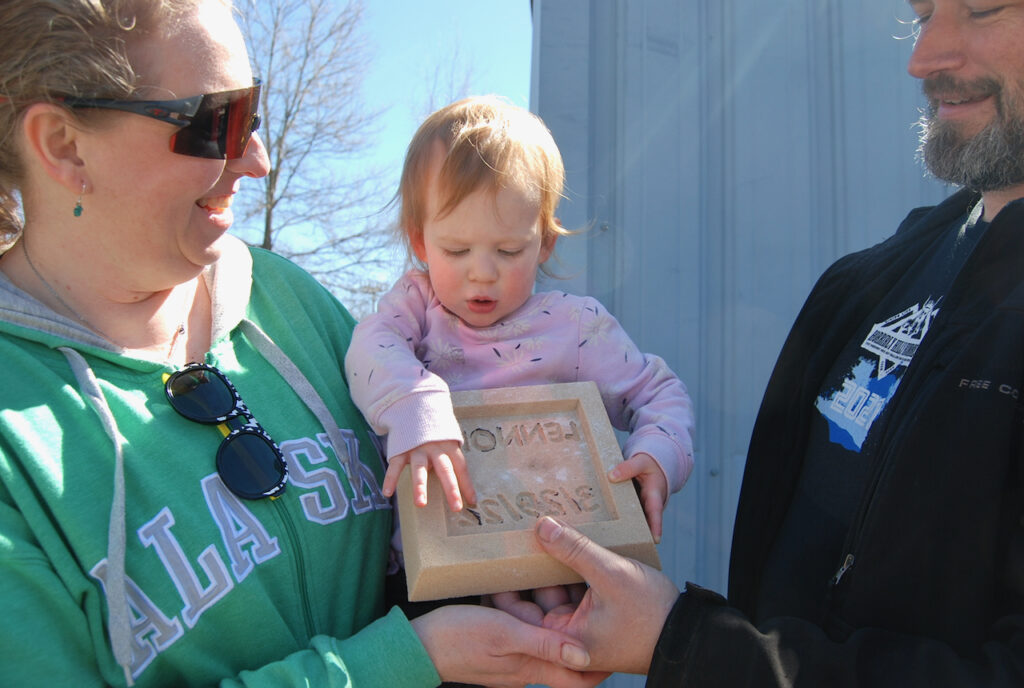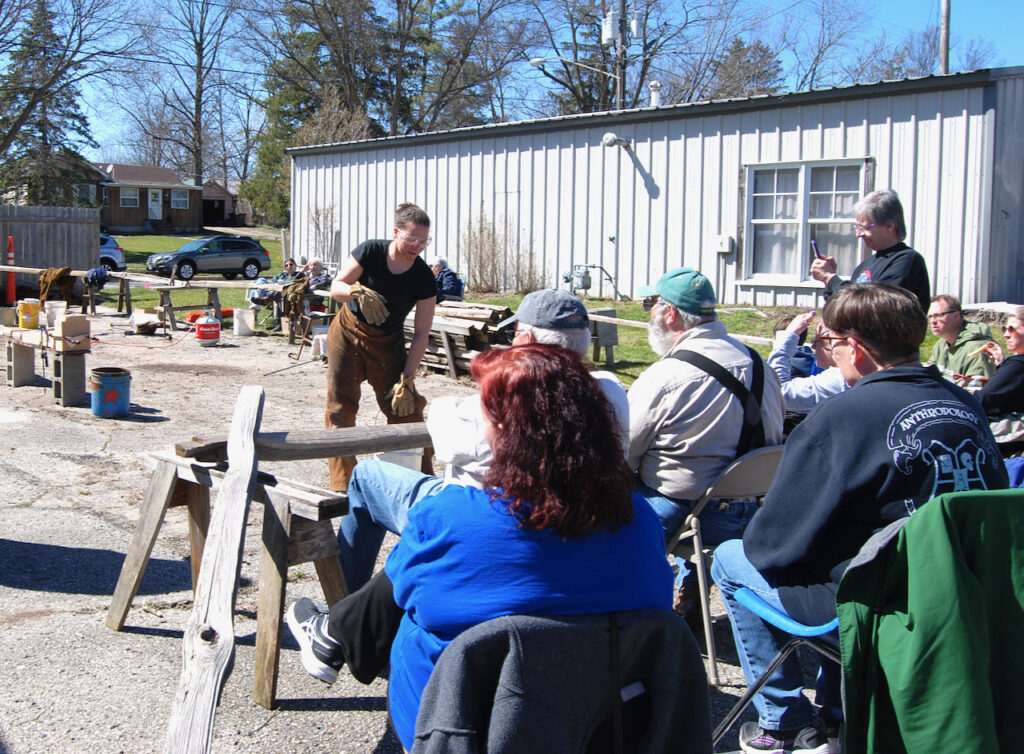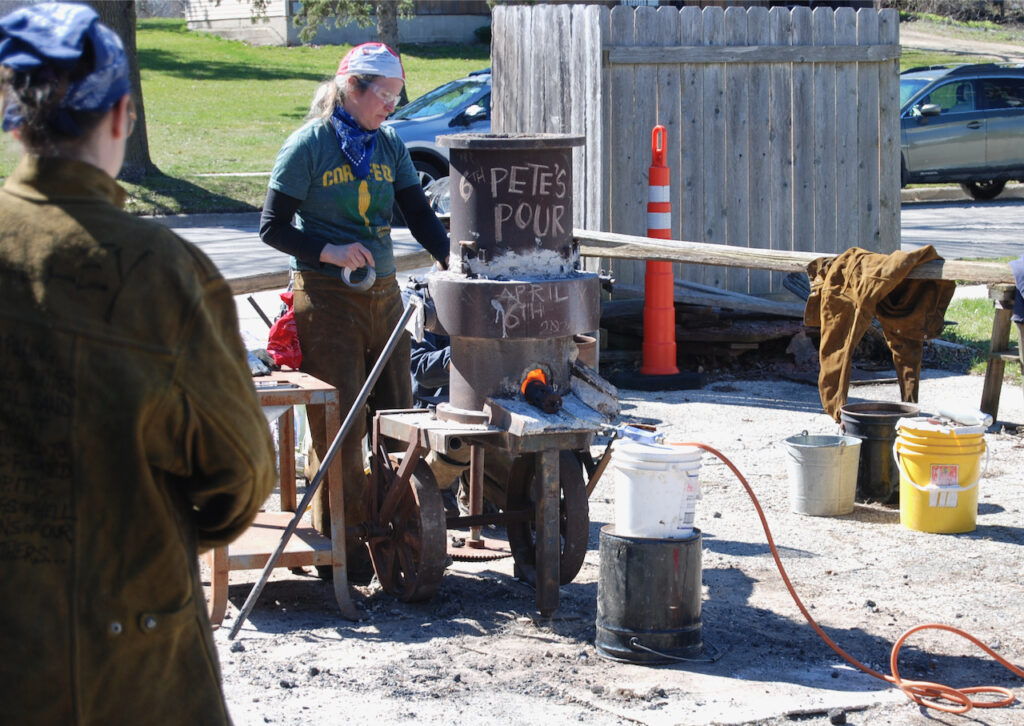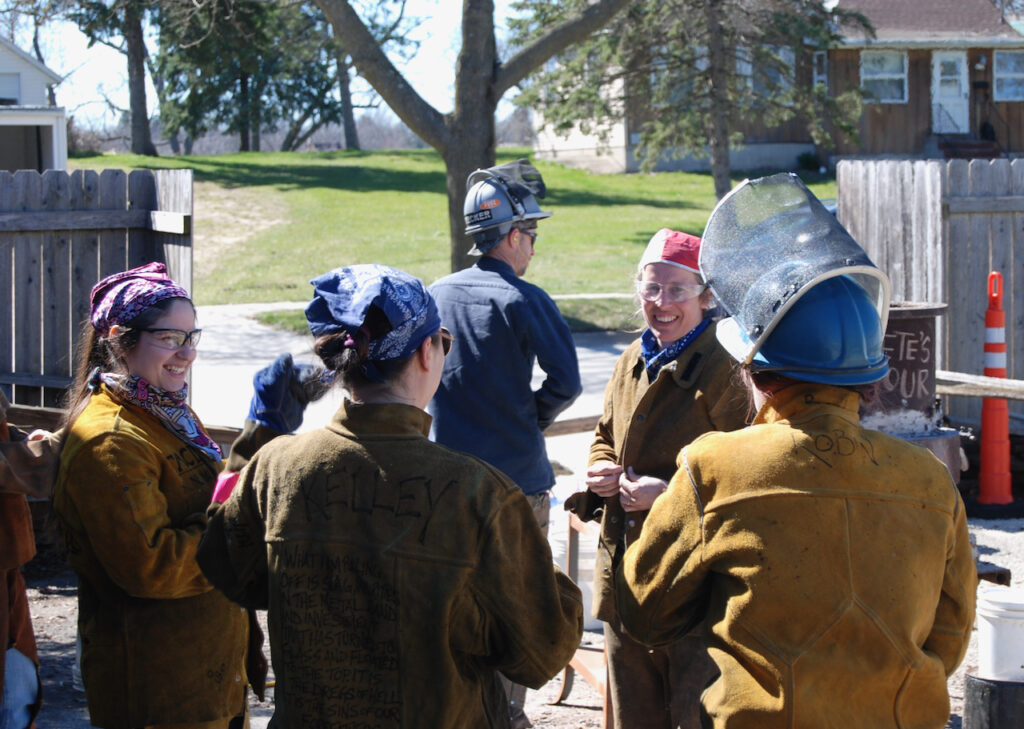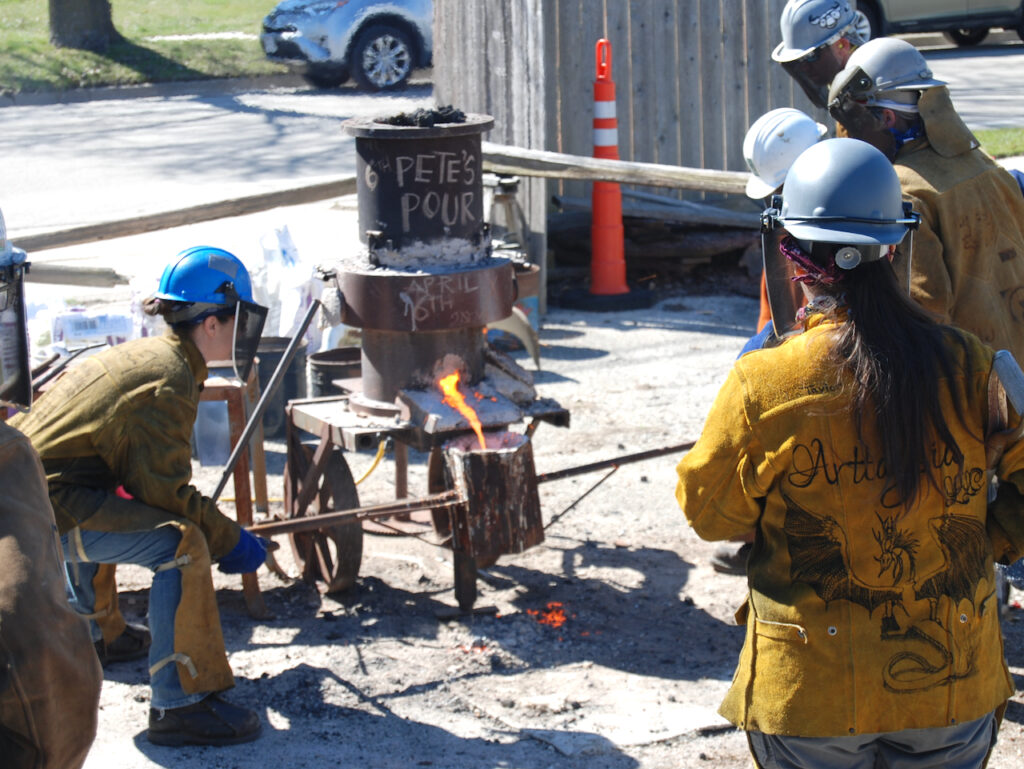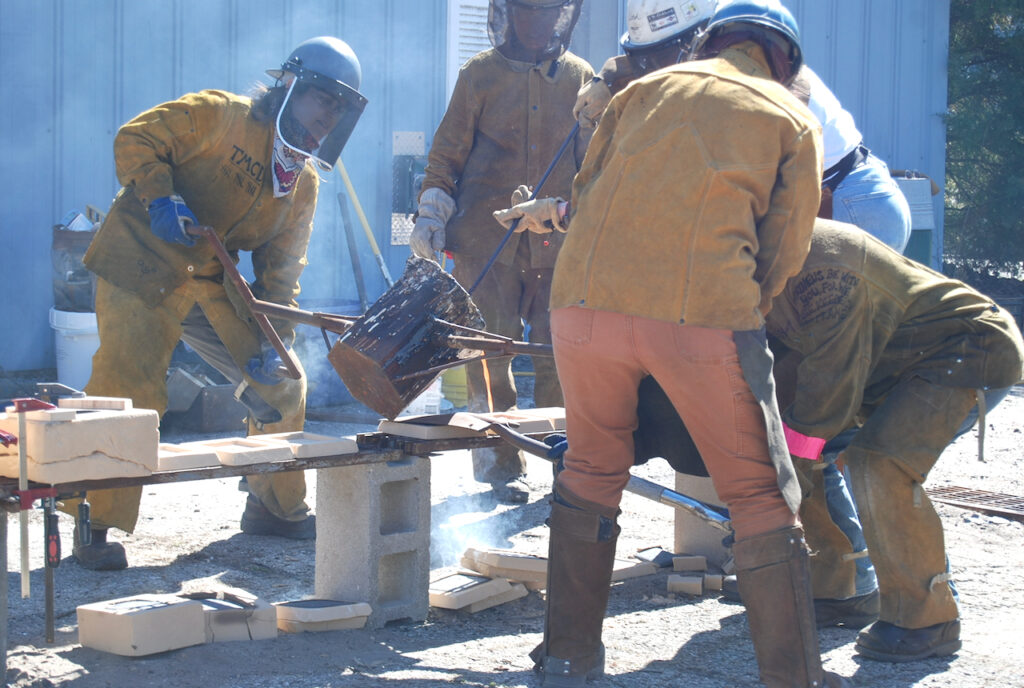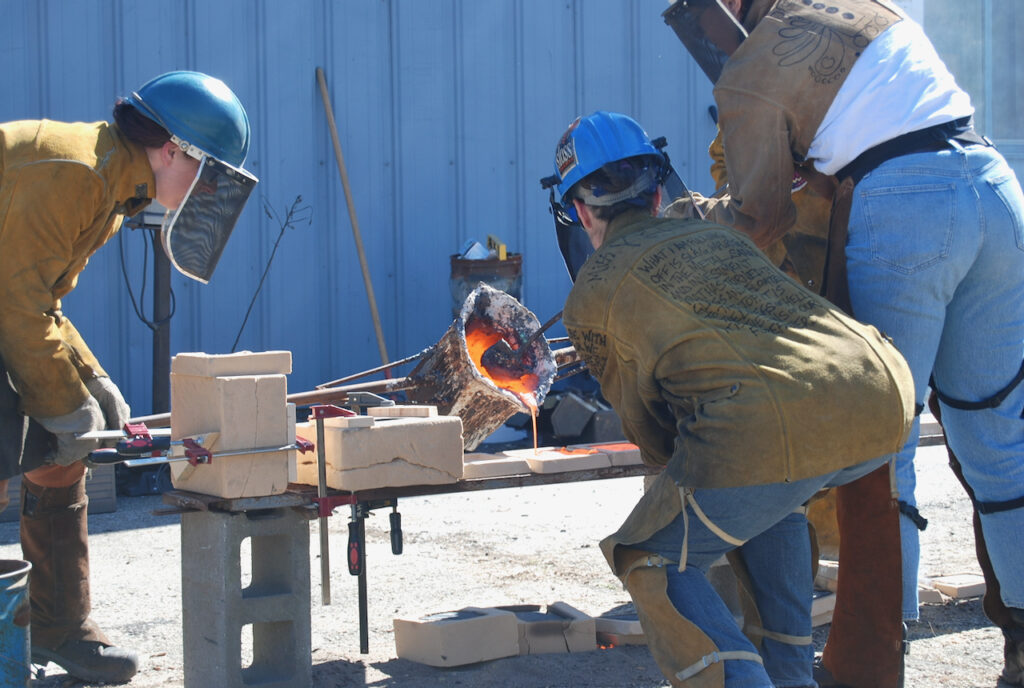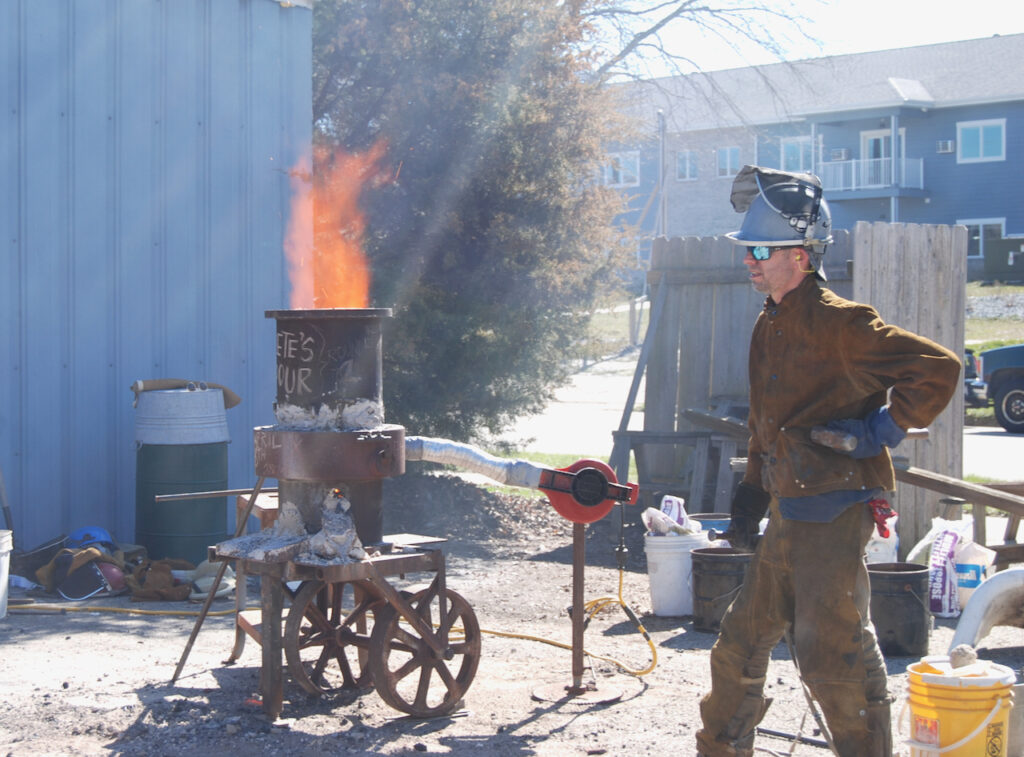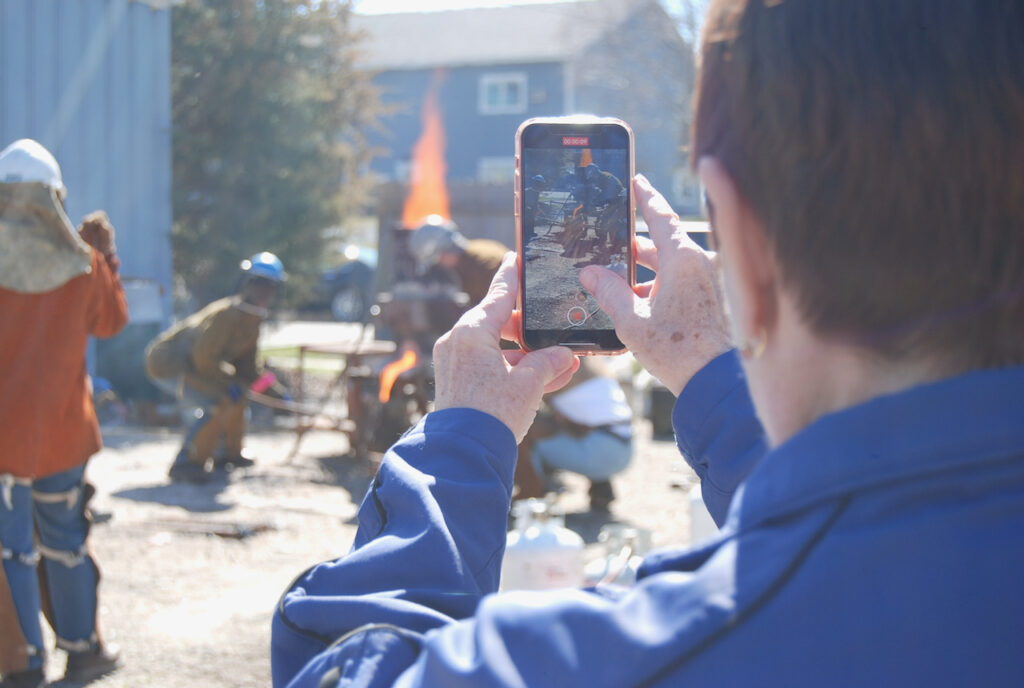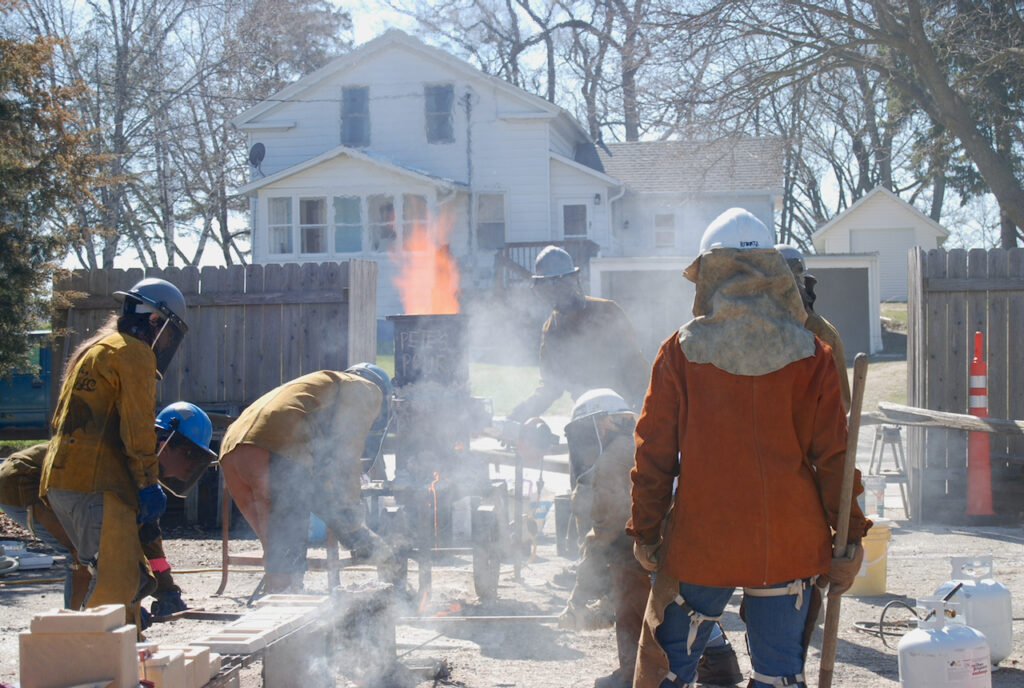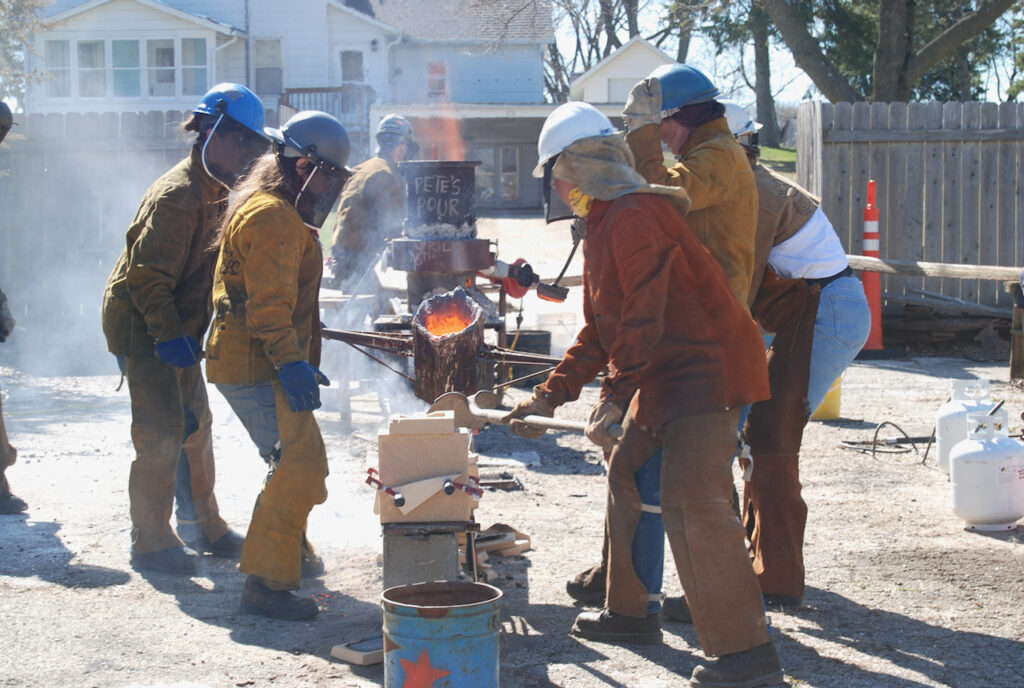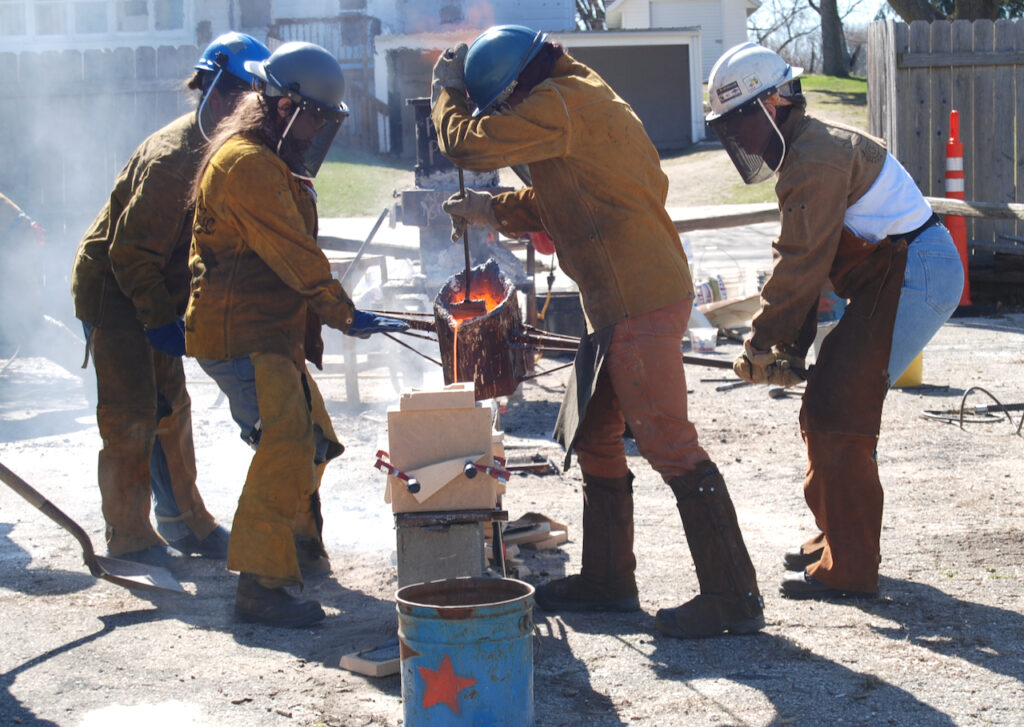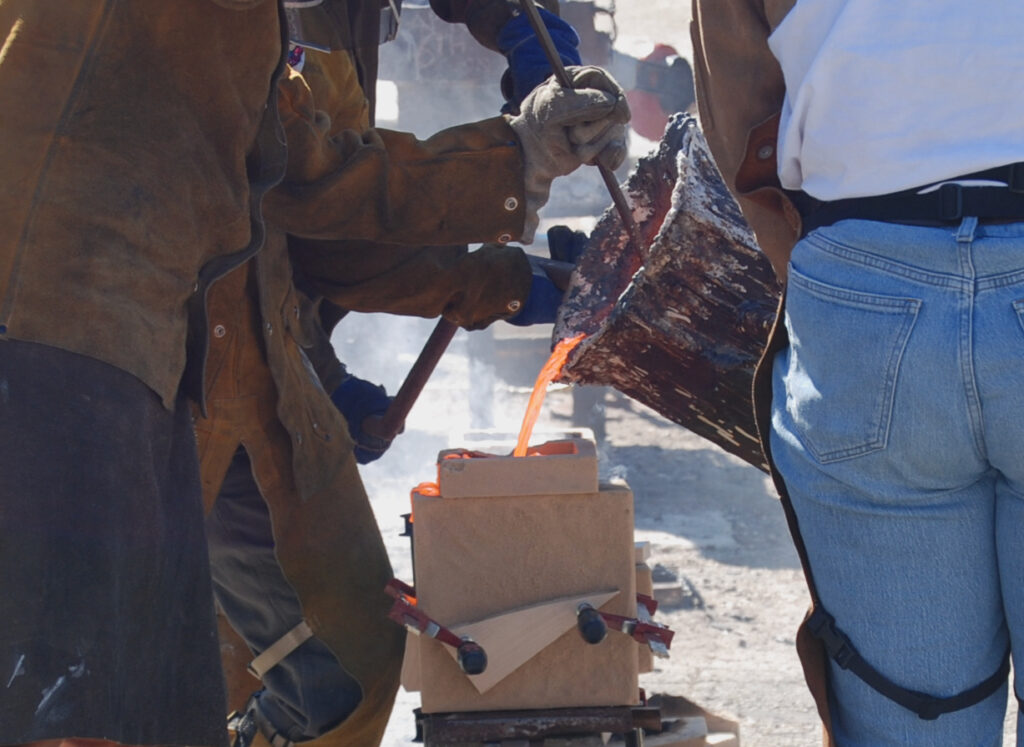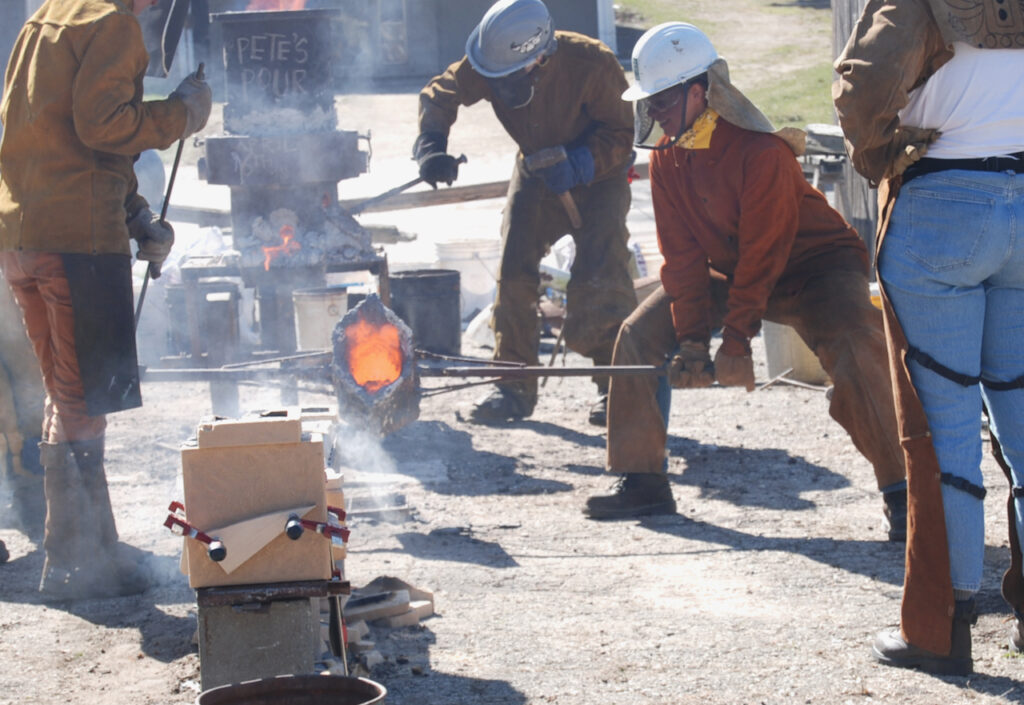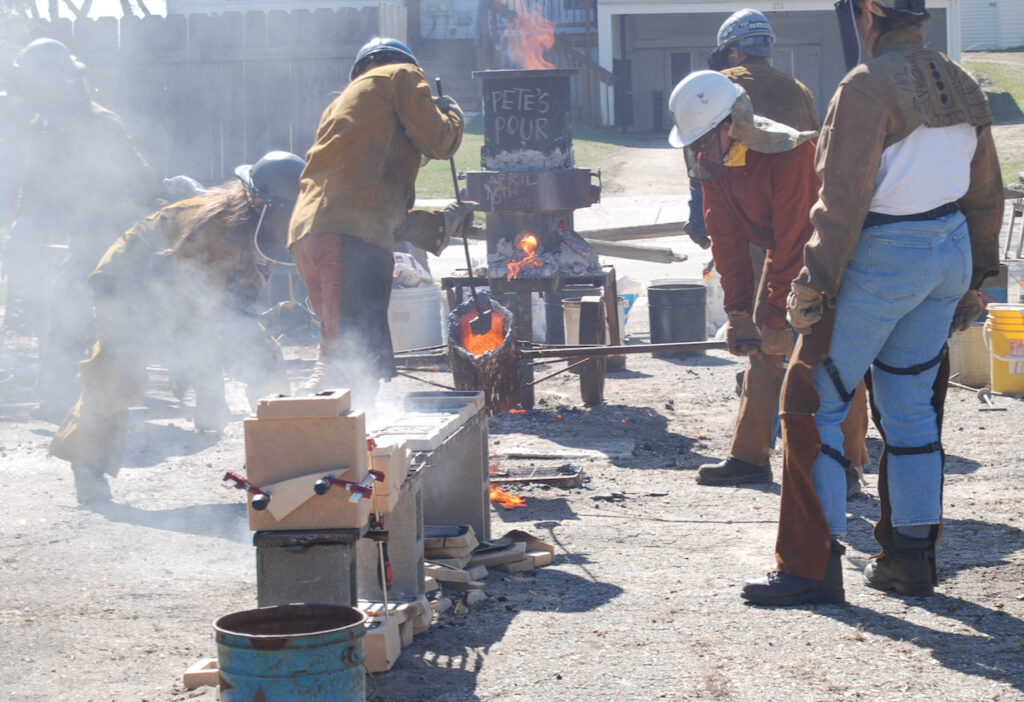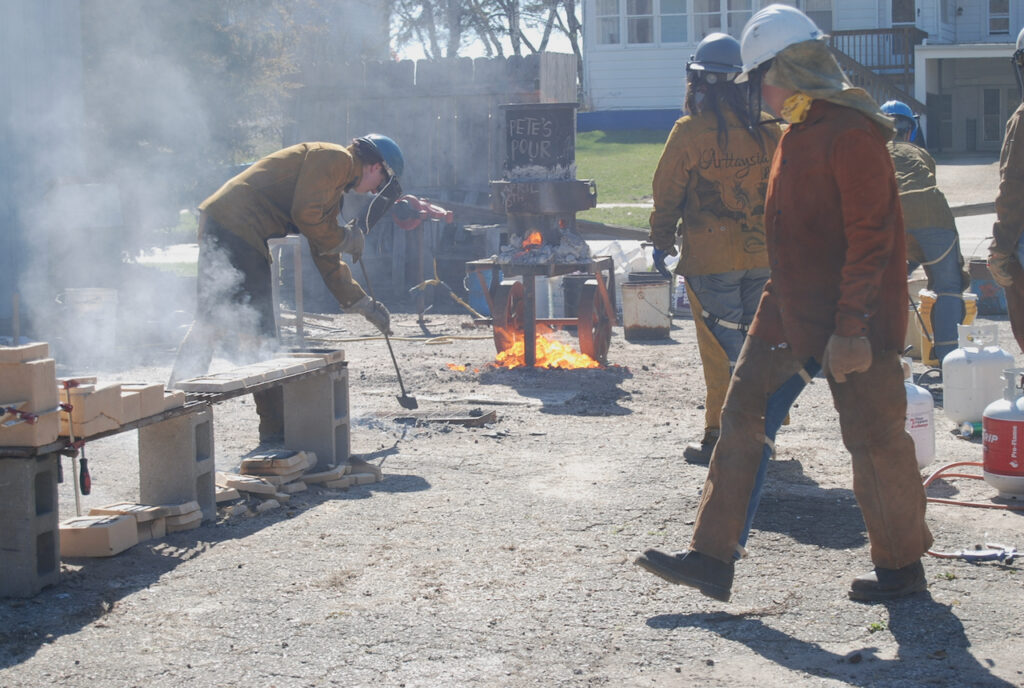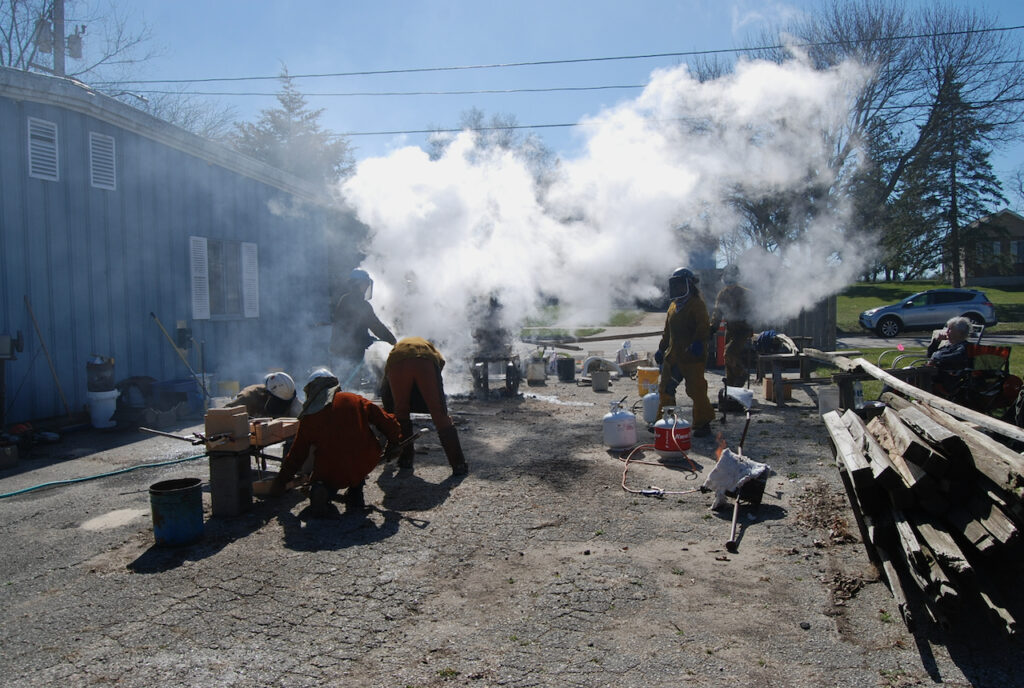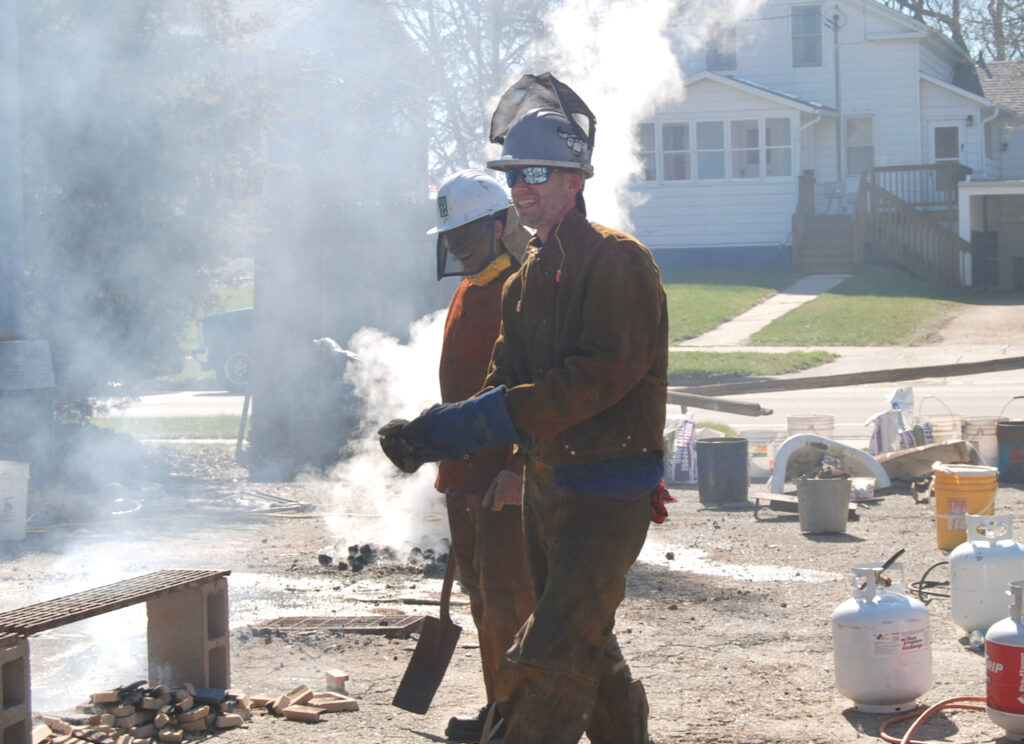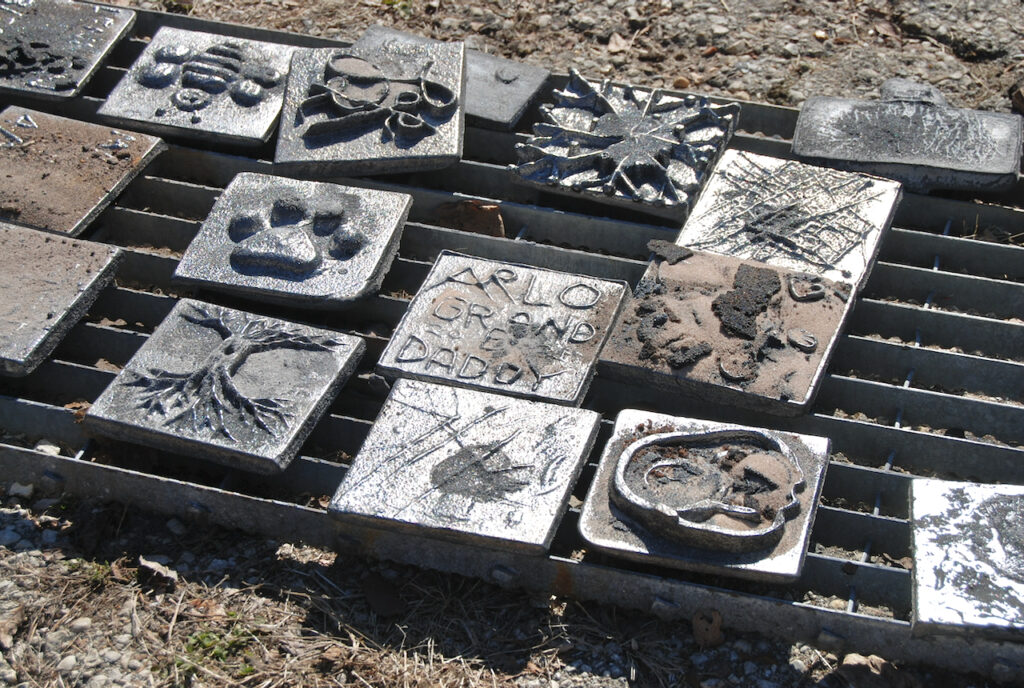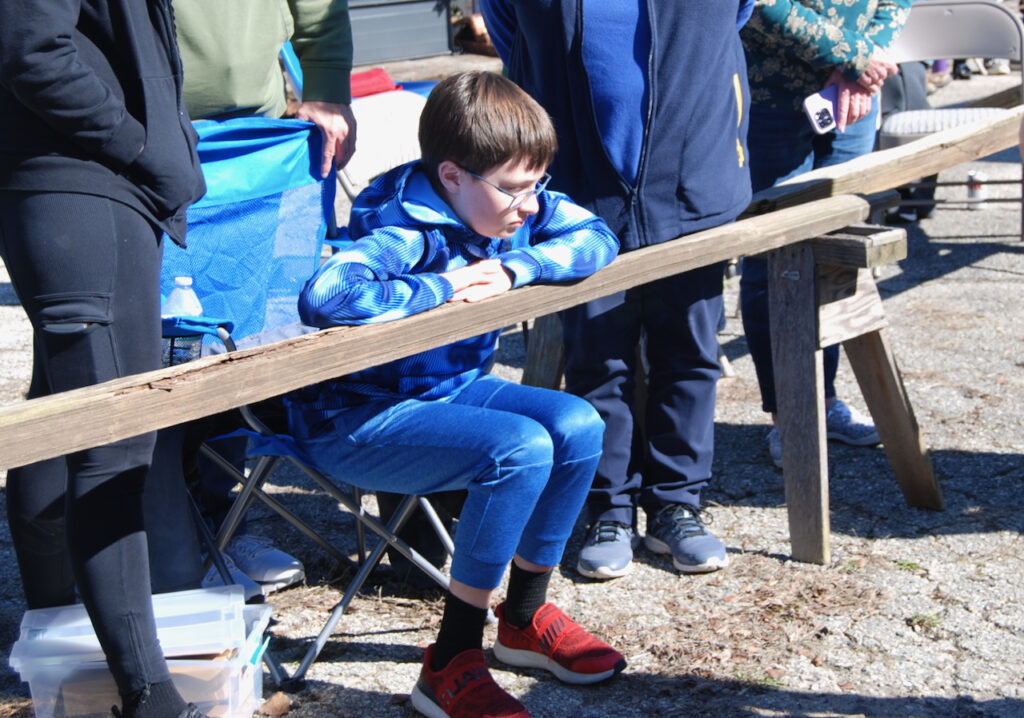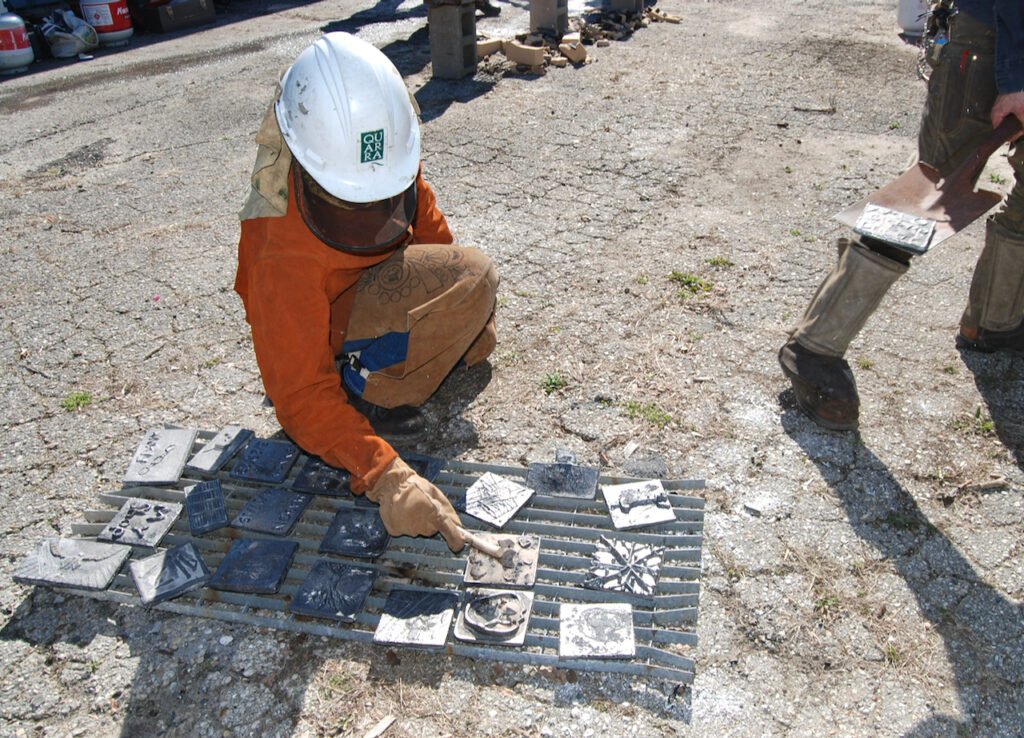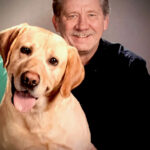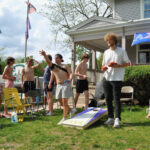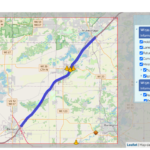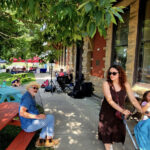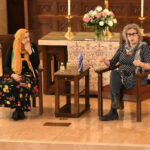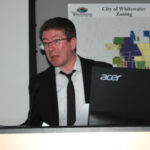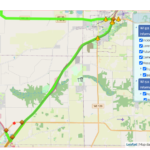By Kim McDarison
Fire, an “iron plug,” then fire again, characterized the seventh annual “Pete’s Iron Pour” held Saturday at the Wisconsin Maker’s building on Clay Street in Whitewater.
Some 30 spectators, many of whom had created designs in scratch blocks, gathered to watch a seven-member pour team fill their molds with molten iron.
While the event started, and finished, smoothly, an unexpected disruption occurred: while the team prepared to pour iron into blocks at noon, an iron plug developed in the interior of the furnace, also known as a cupola, which, former University of Wisconsin-Oshkosh and UW-Whitewater studio instructor and pour team leader Teresa “Tree” Lind said, was the result of a shortage of air circulating through the furnace.
According to Lind: “the air intake on the blower was blocked, which caused the air pressure in the furnace to be too low, so there was not enough heat inside the furnace to melt the iron.
“We still had a lot of heat above and below the air box, but at the wind box, (defined as a receptacle from which a blast of air is supplied) iron cooled and caused a plug.”
Lind said plugs sometimes occur, and while she had in her career attended pours during which plugs materialized, Saturday was the first time she had experienced one in a cupola with which she was working.
“It happens, but it’s not common,” she said.
Pour team members, once aware of the plug, removed hot materials from the furnace, and began strategizing to develop a process to remove the plug. Members took turns, as they wielded various tools, including a sledgehammer, to break the plug free from the cupola.
Wisconsin Makers Secretary Chris Spangler described the wrinkle in the day as “a learning experience.”
Pour participants remained in good spirts, enjoyed refreshments and visited with one another while the team worked with determination to remove the plug and resume the pour. Their efforts paid off, with the plug breaking free at about 2 p.m. and fire leaping from the furnace with molten metal ready for pouring around 3:30 p.m.
Among those waiting to receive an iron tile was 12-year-old Aaron Waldmann, who arrived with his parents, Mike and Candie. The family is from Lake Mills. Aaron said he scratched the words “My Shop” into his block and would display the finished iron piece in his family’s garage, where he keeps his own set of foundry tools.
The Lake Mills Middle School student said he became interested in melting and pouring metal after watching an iron pouring event online. He shared his newfound interest with his parents, who began helping him assemble equipment, Mike and Candie said, adding that they gave him some equipment for Christmas in 2023. Mike and Aaron have since constructed a homemade crucible, a cup designed for melting and carrying molten metals. Aaron said that he envisions using his developing skills as a hobbyist and perhaps one day professionally.
Candie said Aaron’s skills have already been on display at his school, where, as a participant in a school project, he was asked to make something out of recycled materials. Aaron collected aluminum cans and then used his foundry skills to melt the metal and make a set of eating utensils.
Also on hand were members of the Myszkewicz family, including Mark and Kim, and their grandchildren, Mason, 4, and Lennon, 2. The family is from Whitewater. Mark said his grandchildren were excited to ride their bicycles to the pour and watch the process. Mark scratched designs into two blocks.
“Sherlock,” a 3-year-old Pembroke Welsh Corgi and his owner, Tyler Kellmann, both of Whitewater, stopped by the iron pour while out enjoying a walk. Kellmann said he was on his way to the Irvin L. Young Memorial Library when he saw people at the demonstration and made it his plan to stop by on the way back. Kellmann said he is an innovation librarian at a library in Janesville. He is hoping to have an iron pour there one day, he noted.
As molten iron flowed from the cupola, pour team members began transporting the material to some 25 scratch blocks, and a few molds made by members of the team.
Along with Lind, members of the team included Kelley Gierach and Amanda Potratz, both of whom were Lind’s students at UW-Oshkosh; Taylor McDarison, who was Lind’s student when she attended UW-Whitewater, and Gregory Brulla and Robin Holmes, both of whom are fellow artists and friends. The team also included Eliza Bochat, who is a student at UW-Whitewater.
Some iron pour history
As earlier reported by WhitewaterWise, in 2016, when Pete Spangler, then a Fort Atkinson resident and president of the nonprofit group Wisconsin Makers, Inc., purchased the former Whitewater Register newspaper building on Clay street in Whitewater, he had a vision of turning the building into a place where inventors, tinkerers and crafters could come together, use equipment provided by the organization, and envision and make things.
The experience was meant to use a “collaborative and educational approach to creativity,” according to information found on the Wisconsin Makers website.
Responding to questions about the Wisconsin Makers concept in 2017, Pete said that after he established the workshop, he met with then-UW-Whitewater art department metal studio instructor and co-owner of Wisconsin-based Cowyard Studio Teresa “Tree” Lind and together, in 2016, they organized an iron pour.
The event brought students and community members together to explore the creative process of making a one-of-a-kind iron tile from scrap cast iron materials.
Since that inception, the Wisconsin Makers spring iron pour has become an annual event — albeit with a pause taken in 2020 and 2021 as a COVID-19 precaution — attracting in some years, according to its organizers, as many as 100 participants and spectators to the day-long activity.
An earlier story about the event, its history, and the Wisconsin Makers group that hosts it, is here: https://fortatkinsononline.com/pouring-iron-whitewaters-wisconsin-makers-group-to-host-tile-making-event/.
Photos from Saturday’s event follow.
